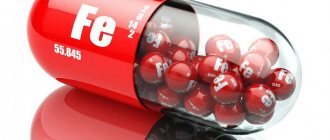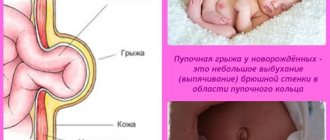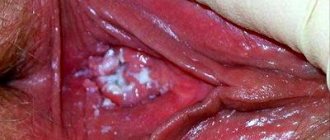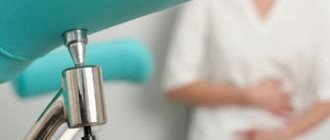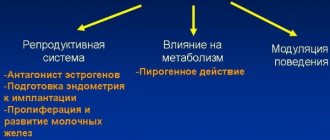Weight gain, low sex drive, hair loss, decreased energy, and depression are all symptoms that can be linked to low testosterone (T). Although this hormone is an androgen, it is just as important and necessary for the female body as for the male. However, doctors often ignore or misdiagnose signs of low testosterone in women. This condition is often confused with depression or considered a normal consequence of aging. Despite this, testosterone levels can be effectively restored, thereby improving your overall condition.
Physiological effects of testosterone
Among the physiological properties of this hormone, common regardless of gender, are:
- Pronounced anabolic effect. The hormone and its derivatives increase the intensity of the synthesis of protein molecules and inhibit the processes of its breakdown, which is manifested primarily by a gain of muscle mass in response to physical activity.
- They provide a decrease in blood glucose levels primarily due to its utilization by tissues, due to stimulation of the activity of glycolytic enzymes.
- Increases the strength of tendons and ligaments. They increase bone tissue mineralization, which leads to increased bone strength and prevents the development of osteoporosis.
- Testosterone also reduces the percentage of fat tissue in the body compared to muscle tissue. However, another effect is also possible - the beginning of the deposition of adipose tissue according to the male type - primarily on the abdomen, and a decrease in the deposition of fat in typically female places - on the buttocks, hips and chest.
But the effect on lipid metabolism is not so beneficial.
Under the influence of the male hormone, the amount of high-density lipoproteins decreases and the amount of low-density lipoproteins increases, which significantly increases the risk of developing atherosclerosis.
Androgens also increase the excitability of the brain centers responsible for sexual desire.
Low testosterone, how it affects a person’s activity, watch the video:
Functions
Androgen is produced in the adrenal gland area, the ovarian region. This process is regulated by the hypothalamic-pituitary structure. The hormonal substance has a list of functions important for body systems:
- Formation of the skeletal base;
- Sexual desire;
- Density of bone tissue structure;
- Creation of an egg;
- Anatomical features, functionality of the reproductive structure;
- Control of muscle volume;
- Formation of fatty deposits;
- Condition of skin tissue;
- Functionality of the sebaceous glands;
- Increased protein synthesis and breakdown;
- Phosphorus, nitrogen exchange moments;
- Function of the cardiovascular system;
- Anabolic effect – synthesis of protein elements, insulin;
- Providing an effect on cognitive functionality;
- Stress resistance, endurance;
- Sugar regulation;
- Absorption of water and mineral elements by body structures;
- Synthesis of lipoproteins in the hepatic zone.
Testosterone levels for women
The normal concentration may vary significantly between different clinical laboratories. This is due both to the characteristics of the equipment used and the determination method itself.
However, most laboratories indicate limits as a physiological norm from eleven to thirty-three nanomoles per liter for men and from zero point twenty-four to three point eight for women.
Reasons for decreased testosterone in women
There are many reasons that can cause a decrease in the production of male hormones, these can be:
- Various types of violations of the diet and quality of nutrition. A lack of fats, vitamins and microelements, as well as vice versa, an excess of fried foods, an excess intake of carbohydrates, a passion for various kinds of mono diets, a raw food diet, vegetarianism and veganism can lead to a decrease in testosterone levels in both men and women.
- Some drugs can also suppress testosterone synthesis. These are various hormonal drugs, oral contraception, anticonvulsants.
- Caution is also necessary with herbal medicine. Some herbs, when used regularly in sufficient doses, can also lead to a decrease in the content of this hormone in the blood plasma of women.
- Too low, or conversely, excessively high physical activity. Since one of the effects of the hormone is to stimulate the synthesis of protein molecules and gain muscle mass, it is produced only in case of sufficient physical activity. Excessive loads, for example, as when preparing for a marathon, on the contrary, deplete the body's resources and reduce testosterone synthesis.
Chronic exposure to stressful situations also leads to a decrease in the synthesis of this hormone, as does alcohol abuse.
Excess body weight has the ability to inhibit testosterone synthesis due to the work of excess fat mass as an endocrine organ.
Similar manifestations can be observed with pathology of the hypothalamic-pituitary system, as well as a hereditary tendency, which can manifest itself either in an initially low level of testosterone or in the insensitivity of receptors to it.
In case of disorders in the endocrine system, as well as in the case of a number of autoimmune diseases (which is partly due to the need for regular use of hormonal drugs), testosterone levels may also decrease.
A pronounced degree of renal failure, as well as, which is somewhat more common, adrenal insufficiency, since in the female body a significant part of testosterone is produced in the adrenal glands.
A variety of ovarian tumors, as well as surgical treatment of such diseases, which involves their removal, also leads to a decrease in testosterone levels in women.
Hormone level
Testosterone levels are subject to endogenous (external) and exogenous (internal) influences.
The level of the hormone in women changes not only throughout life, but also throughout the month and year. There are also daily fluctuations in the amount of testosterone. The normal level of this hormone in women is considered to be 0.36-1.97 nmol/l. However, this norm is indicated for the female body over 13 years old and under 45-50. But even in this age range, hormone levels fluctuate significantly. Over the course of a month, the normal level of testosterone for women of childbearing age is:
- permissible normal limits – 0.45 – 3.75 nmol/l
- average value – 0.29-3.18 pg/ml
- in the phase of follicle formation (1-7 days of the menstrual cycle) – 0.45-3.17 pg/ml;
- in the ovulation phase – 0.46-2.48 pg/ml;
- after the end of the cycle – 0.29-1.73 pg/ml.
During pregnancy, the level of the hormone increases by the third trimester and can exceed the specified norm by 3-4 times. During menopause, the amount of testosterone decreases and is 0.28-1.22 nmol/l. Before puberty, testosterone in girls’ bodies does not exceed 0.98 nmol/l. The maximum value of the hormone level is observed in the morning, the minimum in the evening.
What symptoms can you suspect?
Symptoms of male hormone deficiency in the female body are quite nonspecific, and are similar to the manifestations of many other pathological conditions that negatively affect the functioning of the endocrine system.
Among the manifestations are:
- Unprovoked mood swings or persistent decline. Sometimes there is no need to rush into starting treatment for depression. Sometimes extremely similar manifestations can be observed with a lack of testosterone.
- A persistent feeling of fatigue that does not go away even after nine to ten hours of sleep, which can also be a problem, since low testosterone concentrations lead to sleep disorders.
- A deficiency of male sex hormones also negatively affects sex life. Characterized by a sharp decrease in libido, vaginal dryness, and problems achieving orgasm.
- Hair may become brittle and fall out. This applies to both hair on the head and growing on other parts of the body.
- Problems concentrating. Tasks that previously did not cause any difficulties at all can, with low testosterone, require quite a lot of time and effort.
- Anxiety is also common. Moreover, the severity of this manifestation can vary from minor to full-fledged panic attacks.
Diagnostic measures
Laboratory diagnosis of androgen deficiency is carried out. To identify hormonal indicators, you need to donate blood from a vein. Experts recommend taking the test on an empty stomach, in the morning - at maximum hormone levels. You first need:
- Quit smoking some time before testing;
- Avoid stress and anxiety;
- Refrain from physical/mental stress;
- Do not consume certain medications (barbiturates, etc.), alcoholic beverages;
- Avoid the influence of negative external phenomena that can cause fluctuations in androgen levels.
On the eve of the procedure, it is not recommended to drink alcohol, you cannot smoke, and you are required to abstain from sexual intercourse. The patient must donate blood on a specific day of the menstrual cycle. The maximum content of the hormone is during the period of ovulation. An important point is the determination of the test based on the duration of menstruation. In this situation, a gynecologist can help - for example, with a cycle of 21-23 days, blood should be donated 2-3 days from the start of the cycle. With this information, the doctor calculates the best time for a blood test to determine androgen levels.
You should also know that testosterone can decrease due to increased temperature, fasting, and vegetarianism.
During the testing process, attention is paid to the indicators of the total hormone and its free form. These data are established by calculating the values of total testosterone and sex hormone binding globulin.
Conditions accompanied by similar clinical manifestations
Symptoms of low testosterone levels in women are quite nonspecific and may resemble the clinical manifestations of many other pathological conditions. It is not possible to independently understand the cause of the appearance of disturbing manifestations, since it may be necessary to consult more than one specialist to make an accurate diagnosis.
Among the diseases whose clinical manifestations may be similar to testosterone deficiency include a lack of thyroid hormones. Deterioration of hair and skin condition, mood changes and decreased ability to work do not allow clinical differentiation of these two diseases; additional laboratory tests are needed to indicate the cause of such symptoms.
Major depressive disorder, which is characterized by decreased mental capacity, depressed mood, sleep problems, decreased sex drive, loss, or, conversely, weight gain without obvious changes in eating habits.
However, in the case of such disorders, it is first necessary to exclude the possible somatic nature of such conditions - similar manifestations are characteristic of both the pathology of the thyroid gland and the lack of testosterone itself.
Effective prevention
Eliminating testosterone deficiency has a beneficial effect on sexual relationships, qualitatively improves women’s lives, and ensures a positive mood and excellent well-being.
To do this, the following prevention of hormone deficiency is possible:
- Lead the most correct lifestyle without smoking, alcohol and drugs.
- Eat only harmless, environmentally friendly foods.
- Avoid exhausting diets and fasting.
- Watch your weight and don't overeat.
- Avoid overexertion and exhausting overload.
- Try to maintain constant optimal physical shape and move more.
- Avoid emotional stress.
- Choose an environmentally friendly, favorable place to live.
Low testosterone in women and conception
In terms of the possibility of conception and a successful pregnancy without complications, the increase in the level of male sex hormones is of much greater concern. However, their low level can have a negative impact on this.
First of all, a decrease in the concentration of the hormone affects sexual desire, which in itself reduces the likelihood of conception.
Folk remedies
There are also folk remedies for increasing hormonal levels:
- So 100 grams of pollen should be mixed with half a can of condensed milk.
- The mixture should be kept in the refrigerator for 2 weeks, and then drunk 1 tbsp. in the morning 30 minutes. before meals.
- You should start taking it with 1 tsp, gradually increasing the dose to the desired level.
It is also recommended to take decoctions of ginseng, rose hips and rowan to increase testosterone levels.
How to increase testosterone in women
If the decrease in hormone concentration is not too large, then it is quite possible to increase its level with certain lifestyle changes. First of all, this concerns diet. It is necessary to cancel all strict dietary regimens such as mono diets, sharp restrictions on the number of incoming calories, and it is also not advisable to become involved in vegetarianism and veganism if testosterone is low.
The most suitable option is a balanced diet, balanced in protein, fat and carbohydrates. An important point is also sufficient physical activity, which stimulates testosterone synthesis. However, it should be borne in mind that excessive loads, exhausting long and intense workouts in the gym will lead to the opposite result.
If such measures are ineffective, medications containing testosterone may also be prescribed. They can be produced in the form of tablets, patches, gels or creams, as well as in injection form.
Learn more about how to increase testosterone levels in women by watching the video:
Androgen normalization
Reduced hormonal levels can be increased through a complex treatment process - hormone replacement therapy, taking herbal medicines, adjusting your nutritional diet, and physical exercise.
Before starting the treatment process, it is necessary to identify the sources that provoked a decrease in the hormone in the body structure. To do this, you need to see a doctor, undergo diagnostics, and take tests.
You should also normalize your lifestyle - get up to 8 hours of sleep, refrain from harmful addictions, and have regular sexual intercourse.
Hormone therapy is prescribed by a doctor - he develops a treatment regimen and determines the dosage of the drug used. Products containing testosterone vary:
If the patient has low androgen levels, then the following are used:
- Parity;
- Omnadren;
- Testosterone propionate.
The above substances have a list of contraindications, so their use should be agreed with a doctor.
